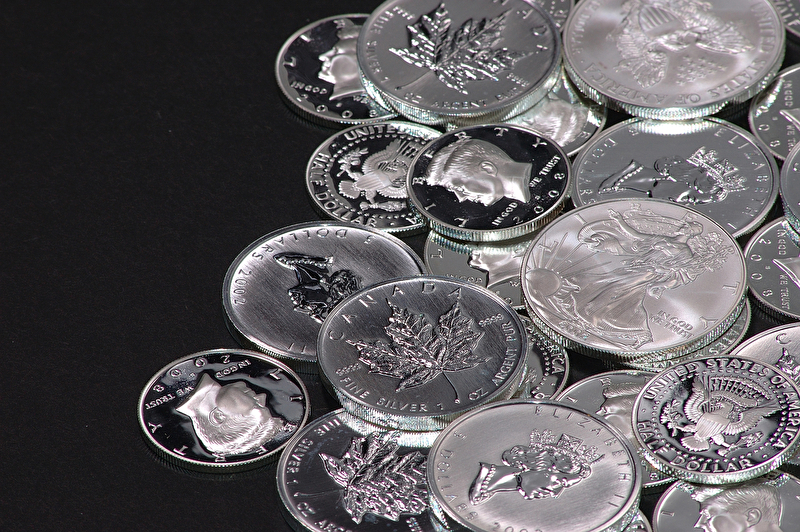Investing in gold for retirement – can it secure your pension?
Gold facts & figures Arnulf Hinkel, financial journalist – 14.04.2025
Industrialised countries are undergoing a demographic change and state pension alone is rarely enough to ensure a good standard of living in old age with a declining number of working citizens paying into state pension funds. In Germany, there were four contributors for every pensioner in the mid-1970s; today there are only two. In addition to the state pension, employees often have the option of paying into their employer’s company pension scheme. To close the pension gap, there is, however, no way around a private pension plan which may be a form of private pension insurance, with or without state subsidy. Endowment life insurance, savings plans and a long-term investment portfolio are also effective ways to plan for a financially stable retirement. This is where gold can make a valuable contribution as a long-term asset. Combined with equities and bonds, gold offers added portfolio value, but it can also contribute to retirement planning as a single investment.
Gold and private pension planning – do they really go together?

Roughly three billion people around the world are already invested in gold as part of their retirement plan. In fact, the precious metal accounts for a large share of global retirement savings. Asia tops all other global regions in terms of gold being given as a traditional gift to loved ones as a provision for later years, and during wedding season in India, local gold purchases noticeably drive global demand.
In Europe and America, from the late 19th century to the early 1970s, gold was used primarily to hedge and stabilise currencies and thus the global monetary system. This was also the reason why central banks hoarded gold reserves – and continue to do so to this day. Nearly 37,000 tonnes of gold are held in the vaults of central banks as an important part of foreign currency reserves, which serve to reduce exchange rate risks for the respective country and strengthen confidence in the financial markets.
The role of gold in retirement planning

In an annual survey conducted by the World Gold Council, central banks are asked why they continue to expand their gold reserves. The most important factors cited for the purchase decision are, with the greatest regularity, the precious metal’s function as a store of value and protection against inflation, as well as a safe haven in times of crisis. It is precisely these properties of gold that also come into play in investor portfolios and private pension provision. The precious metal is suitable for cushioning or limiting weak or negative developments in other forms of private pension provision. The returns on private pension insurance, including German Riester pensions, life insurance and savings plans, depend on the development of real interest rates – i.e. inflation-adjusted interest rates. If they develop unfavourably for investors, as was the case in the eurozone in the low or negative interest rate phase from 2008 to 2022 and the subsequent high rate of price increases with up to 8 per cent inflation, this has a noticeably negative effect on the expected returns. Even stocks, bonds, exchange-traded funds (ETFs) and other investment funds do not generate the hoped-for returns under difficult economic circumstances. Gold, on the other hand, usually performs well in such times, as during the following crises:
- The bursting of the dot.com bubble in 2000
- The global financial crisis of 2008
- Followed by the euro debt crisis of 2010
- The COVID pandemic of 2020–2022
- The Russian invasion of Ukraine
- And finally, the escalation of the Middle East conflict in 2023
These phases saw gold more than proving its status as a safe haven and store of value. From the beginning of 2000 to 2025, the price per gram of gold rose from just under €9 to over €90 – a tenfold increase. This makes gold one of the most attractive investments of the last 25 years. Only a few crypto currencies have performed significantly better, but they have also been significantly more volatile. Their risk profile makes them unsuitable for retirement planning.
An overview of the advantages of gold for retirement planning

Gold has been used as a store of value for thousands of years. A comparison of the purchasing power of money and gold shows how effective the precious metal is as a hedge against inflation. The loss of purchasing power of a currency is particularly noticeable in periods of high inflation, but it occurs almost continuously over time. According to an analysis by precious metals investment company Solit Kapital, the euro lost nearly 81 per cent of its purchasing power against gold between 2000 and 2020. The common currency has lost even more of its purchasing power since 2020 due to high inflation in the eurozone, which is reflected in the gold price, which rose by a further 70 per cent from 2021 to 2025 and thus proved a reliable protection against inflation.
Another example of the stable value of gold over a much longer period: around 2500 years ago, the purchasing power of one ounce of gold would have been around 350 loaves of bread – a number which would be much the same for the current 2,685 € per ounce of gold (March 2025).
Gold also ensures greater value stability in a retirement portfolio
In addition to its functions as a store of value and inflation hedge, gold offers investors a second advantage that is directly reflected in the success of a retirement plan. Scientific studies such as the recent 2024 Mercer study “Gold as an asset class for institutional investors” show that adding just 5 per cent of gold can improve the risk-adjusted return of an investor portfolio and reduce volatility – i.e. the fluctuations in value – of a typical equity/bond portfolio. This is due to a unique effect: during economically prosperous phases, gold does not correlate with the performance of stocks and bonds, i.e. the precious metal remains largely unaffected by price developments in the stock and bond markets. In times of crisis, however, the correlation of gold to stocks and bonds turns from neutral to negative: when stocks and bonds lose value, gold gains value, thus reducing overall portfolio risk. Gold is therefore an important and effective tool for portfolio diversification which should be included in any well-balanced investment mix. Since gold is a particularly strong asset in the long term, it is an ideal component of a retirement portfolio with its inherent long-term investment horizon. After all, a comprehensive retirement plan cannot usually be built up within a few years.
Not just an investment: gold is also a scarce commodity
As a scarce commodity, the gold price development is also independent of banks and financial systems. For investors concerned about a collapse of our financial system, gold can therefore provide an additional security which cash may no longer be able to offer in an emergency.
Gold offers tax advantages over other investments
Another major advantage of gold over almost all other asset classes is the special feature that gold – like all precious metals – is not subject to withholding tax after a minimum holding period of one year in Germany. Profits are tax-free, as opposed to interest gains or returns on stocks, which are subject to a 25 per cent withholding tax. And, unlike other precious metals such as silver, gold is not subject to VAT – another advantage for private investors.
Risks and disadvantages of gold as a form of retirement provision
Like any other asset, gold has downsides. While they do not make the precious metal less attractive as an investment, investors should be aware of them:
- Gold offers no regular interest income or dividend payments
- In the short term, the price of gold can fluctuate greatly
- Gold holdings incur additional costs for storage and security
The greatest disadvantage is that, unlike money market products and bonds, gold does not generate regular interest income – nor does it pay dividends like stocks. Returns on gold are achieved exclusively through a positive price trend.

To learn more about this topic, read our article “Gold development: ten major influencing factors” .
Even over a period of several years, gold can lose value – but not permanently. For this reason alone, gold should always be seen as a long-term investment. In return, however, gold has the advantage that it can never suffer a total loss, as can be the case with shares or bonds of a bankrupt company, or certificates of an insolvent issuer, such as Lehman Brothers during the 2008 US mortgage crisis. Gold rests on the fact that it has been a sought-after and rare commodity for 5,000 years, with extraction becoming increasingly difficult and expensive.
Physical gold ownership incurs additional costs

One final disadvantage that should be considered when investing in gold: the costs that arise after purchasing physical gold in the form of gold bars or coins, which include fees for safe deposit boxes at banks or precious metal dealers, or the cost of a home safety system and theft insurance. These costs need to be weighed against the precious metal’s performance. However, this cost disadvantage only applies to investments in physical gold. More on this below.
Gold in practice: sensible investing
As a rule, gold investments should be made at an early stage – in line with overall retirement planning. Apart from that, however, there is no ‘one size fits all’ solution, because the form of gold investment depends on individual needs, attitudes and, of course, financial possibilities. If, for example, a very small monthly sum is available – e.g. €10 – for a gold investment, a gold savings plan could be a good idea. However, there are issues to be considered. First of all, it should be clear whether the monthly investment represents a special fund of the gold plan provider or it is the property of the provider. In the latter case, there is a risk of a total loss of the investment in case of the provider’s insolvency. A special fund, on the other hand, continues to exist independently of the provider.
Next, it is important to know which model the gold savings plan follows. For a savings plan, a fixed savings rate is invested until the purchase of a gold bar of the size selected by the investor can be realised. Disproportionate price surcharges are due when purchasing the smallest bars, e.g. 18 per cent for a one-gram bar compared to 1.5 per cent for a 100-gram bar.
The third model is designed to circumvent this issue via the pro-rata purchase of large gold bars, where the trading costs are significantly lower. For a one-kilo gold bar, the premium is only 0.9 per cent. Like all savings plans, gold savings plans are very convenient for investors – a convenience priced in by providerS. As with the purchase of physical gold, investors should rely only on trustworthy providers who offer a high degree of cost transparency. Gold savings plans are a rather expensive way of investing in gold for retirement, but they make sense for limited budgets or investors less diligent when it comes to putting money aside for retirement. One-off investments or investments made at longer intervals, on the other hand, incur significantly lower additional costs.
Opt for physical gold or...
When it comes to gold, many investors think first and foremost of gold bars and gold coins, which come in all sizes and variations. While gold bars are generally made of pure gold with a purity of 999/1000, some gold coins made of alloys with a lower gold content. However, renowned gold coins such as Philharmonic coins, Maple Leaf or Krugerrand have the same purity as gold bars. From a weight of 100 grams, gold bars are more cost-efficient than coins, which also are at a higher risk of being counterfeit. As mentioned, both forms of physical gold require secure storage, which incurs continuous costs for investors. The gold knowledge article “Gold bars – facts and tips on value, security and alternatives” provides a comprehensive overview of the options for dividing bullion into smaller units, the storage options and costs, as well as tips to verify the authenticity of gold, e.g. for spontaneous purchases while on holiday.
...rely on the cost efficiency of gold-based securities?
For those who do not necessarily want to own physical gold, there are numerous exchange-tradable securities which track the performance of the gold price but are more cost-efficient than their physical counterparts:
- Gold certificates
- Gold ETCs (Exchange Traded Commodities)
- Physically backed gold ETCs
Trading costs for these securities are significantly lower than for gold bars or coins, with price ranges of 0.1 per cent or less, while further costs, such as those for safekeeping, are practically negligible.
Gold certificates: the cheapest alternative
The most cost-effective option: gold certificates. In terms of investment security, these products, however, cannot compete with gold bars or coins. As a rule, issuers of gold certificates do not hedge the investment. In the event of bankruptcy, the value of the gold certificates can therefore be lost completely.
ETCs: no safer than certificates without physical collateral
ETCs (Exchange Traded Commodities), are debt securities. In case of insolvency of an issuer, investors are not protected from the total loss of their investment if the ETCs are not physically backed. They are no more secure than certificates.
Gold ETCs with physical collateral: reliable protection against total loss
A much safer alternative that is hardly more expensive are gold ETCs fully backed by physical gold. One example is the ETC Xetra-Gold, which not only rules out the risk of a total loss of the investment but also securitises a claim for delivery of physical gold at any time in the amount of the respective ETC investment. For a fee, Xetra-Gold investors can exchange their respective units for physical gold at any time. Since the issuer, Deutsche Börse Commodities, purchases and securely stores one gram of physical gold for each unit of Xetra-Gold, which corresponds to one gram of gold, the investment is equally safe as physical gold – at a significantly lower cost. This in turn benefits the performance of the retirement provision mix, which can lead to a better financial situation in old age.
Complete independence from the capital market is expensive

For investors who trust the capital market and the existing financial system, physically backed gold ETCs are a sound investment choice, as their cost efficiency directly converts into returns. Those seeking maximum independence from the existing financial system are better off with gold bars in the smallest possible denominations so that the gold can be used as a means of payment if necessary. The bottom line, however, is that the latter option is significantly more expensive, which in turn reduce long-term return.
Silver and palladium: alternatives to gold or rather a supplement?
Silver is often called ‘the little brother’ of gold. Both precious metals served as a means of payment for many millennia, and both are needed as an investment and as a raw material for jewellery, in the automotive industry and in future-oriented technologies. They both tend to increase in value in times of crisis. However, there are significant differences in volatility – the price of silver is subject to much more severe fluctuations than that of gold.

Furthermore, silver, the ‘poor man's gold’, is up to 80 times cheaper than gold. Silver can be an alternative to gold for less liquid investors. However, experts advise against it, because the risk of loss due to the strong price fluctuations is much higher than with gold. As a limited addition to gold, however, silver can make sense, as its higher risk of loss is ultimately offset by higher potential gains – at least in theory. Between 2010 and 2020, the price of silver rose by a good 33 per cent, but that of gold by almost 80 per cent. This is where palladium comes into play. The precious metal, even rarer than gold, has appreciated 634 per cent over the same period. However, the price of palladium has fallen in five of seven official US recessions since 1970 – and in most cases by double digits. Palladium is used primarily in the automotive industry and is found almost exclusively in South Africa and Russia. Its investment risks are significantly higher than for gold, so that – even more than for silver – the following rule applies: palladium is fundamentally suitable as an additional potential source of income. Due to its industrial and thus economic dependency, it should, however, be added to a retirement portfolio in significantly smaller proportions than gold. A precious metal portfolio composed of corresponding ETCs, for example, is suitable for this purpose. As so-called alternative investments, silver and palladium can act as potential yield drivers, but they also introduce additional volatility into the portfolio. Both silver and palladium, in contrast to gold, are subject to VAT, but, as with gold, there is no withholding tax on profits after a minimum holding period of twelve months.
Conclusion: start saving for retirement with gold as early as possible
For stock market professionals and private investors, the rule is the same: never back just one horse. A private pension plan based exclusively on gold is therefore not recommended. However, the precious metal is recommended as an important component of a well-balanced retirement portfolio with a long-term investment horizon, which should consist mostly of stocks, ETFs and bonds. Adding just 5 per cent of gold improves the risk-adjusted portfolio performance and thus contributes to a better financial situation in retirement. However, given the strengths of gold as a store of value, its function as an inflation hedge and its role as a safe haven in times of crisis, experts do recommend a higher gold allocation of at least 10 per cent – not least because it has proven to greatly enhance yields over the last 50 years, with an appreciation of 1,722 per cent (in US dollars; the euro did not yet exist at the time, but the trend is similar).
Xetra-Gold Hotline

Do you have questions? We have the answers. Contact us here: 9 a.m.–6 p.m. CET
xetra-gold(at)deutsche-boerse.com
For press inquiries: media-relations(at)deutsche-boerse.com



